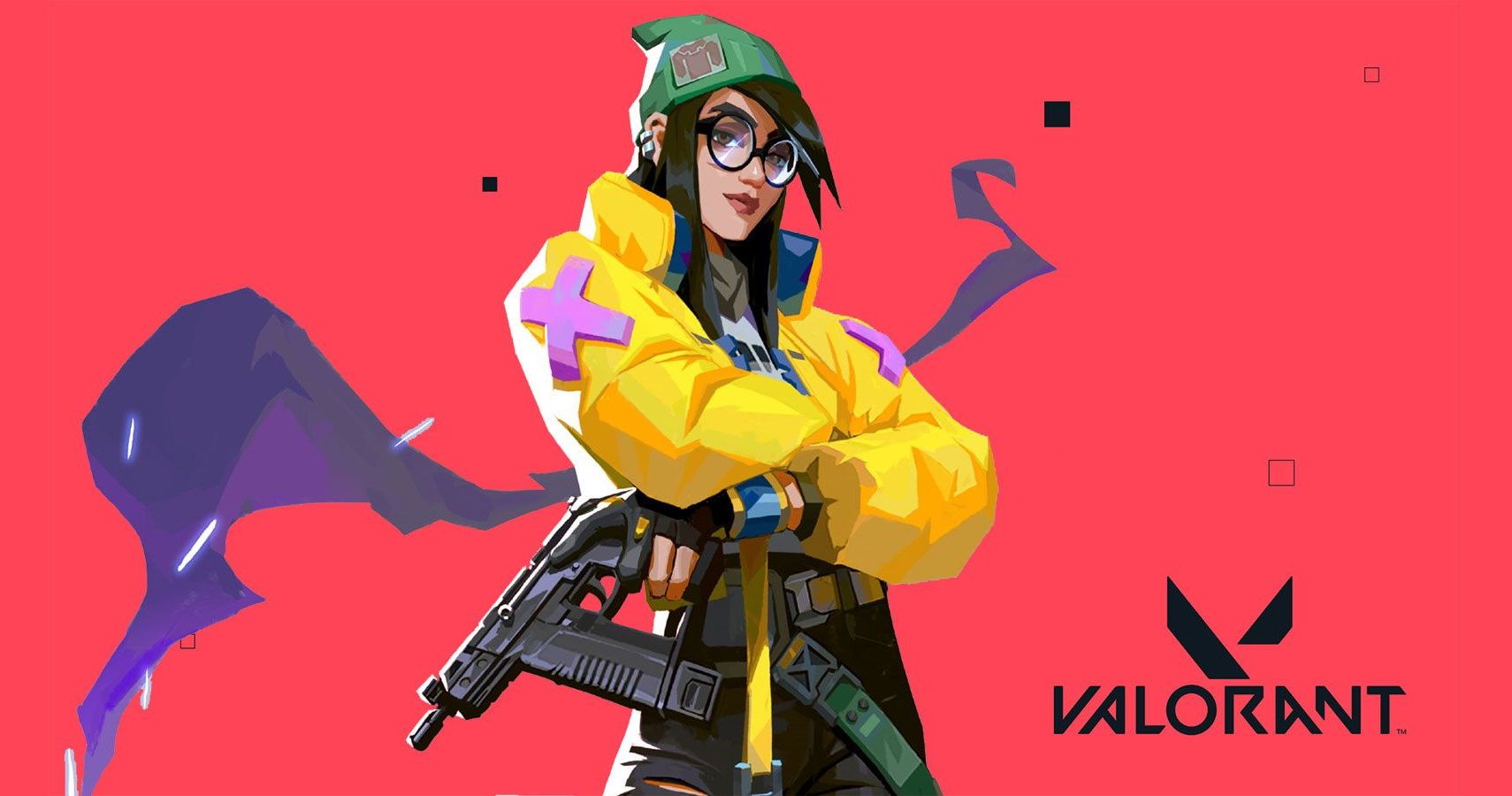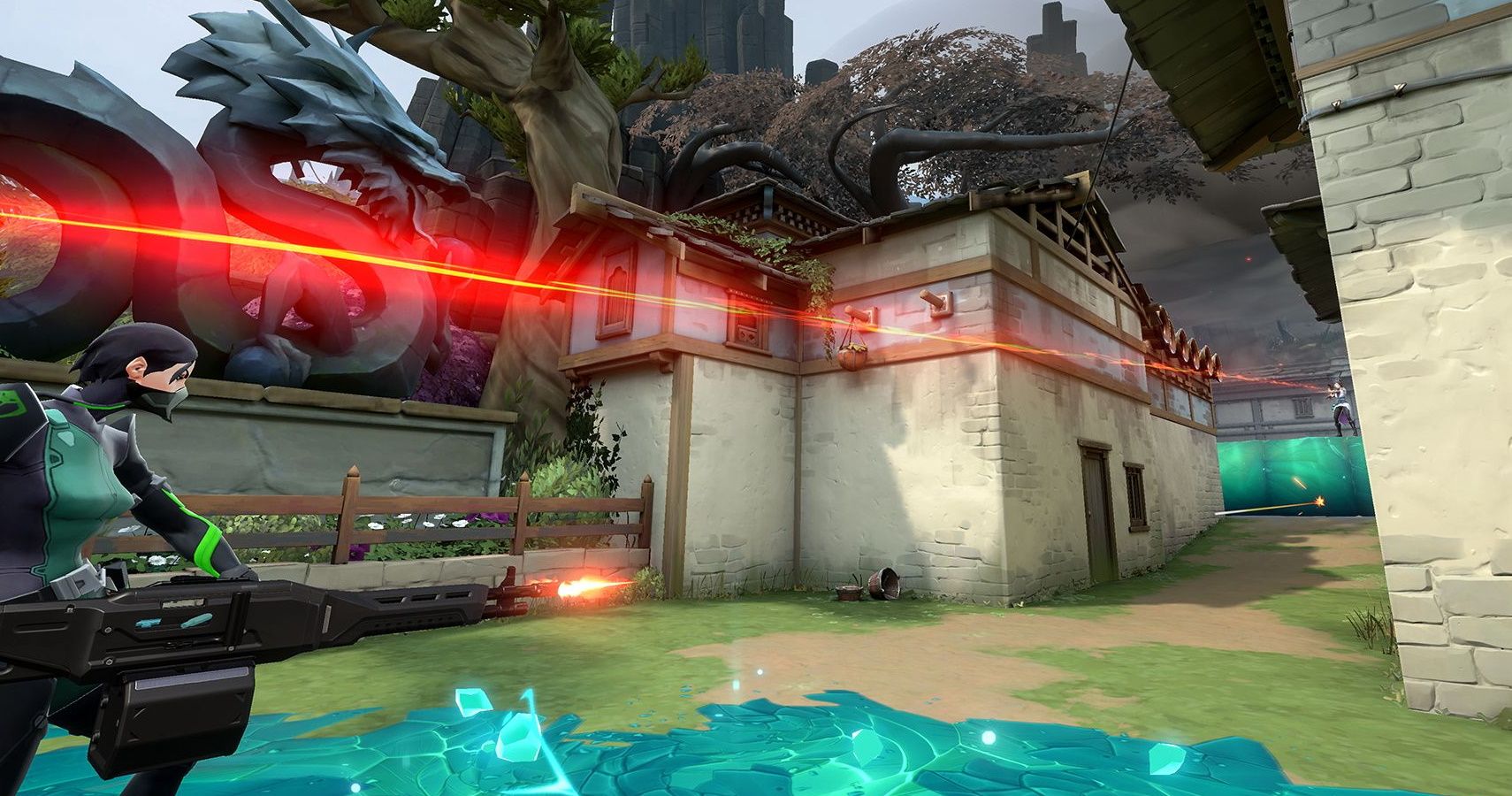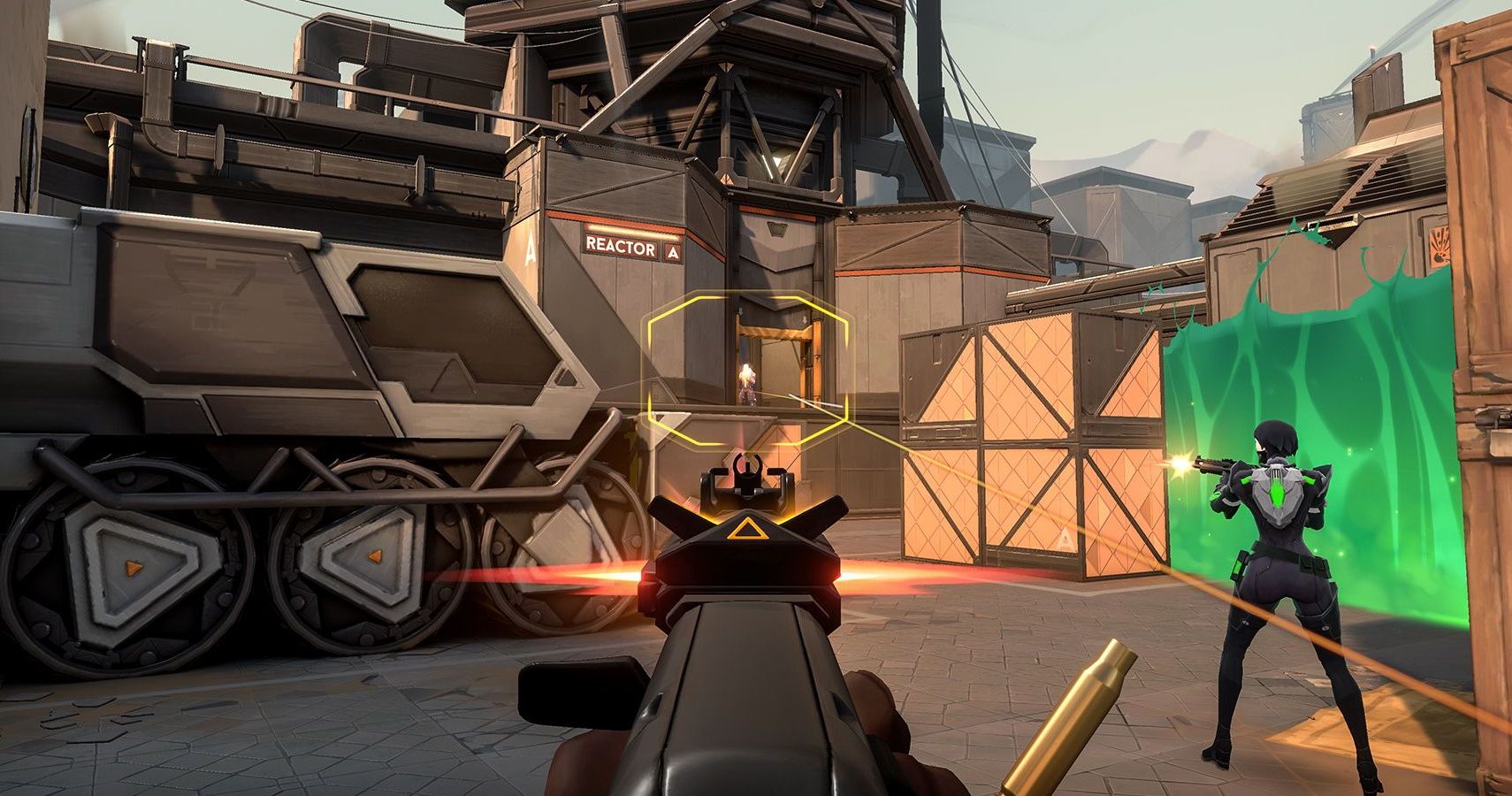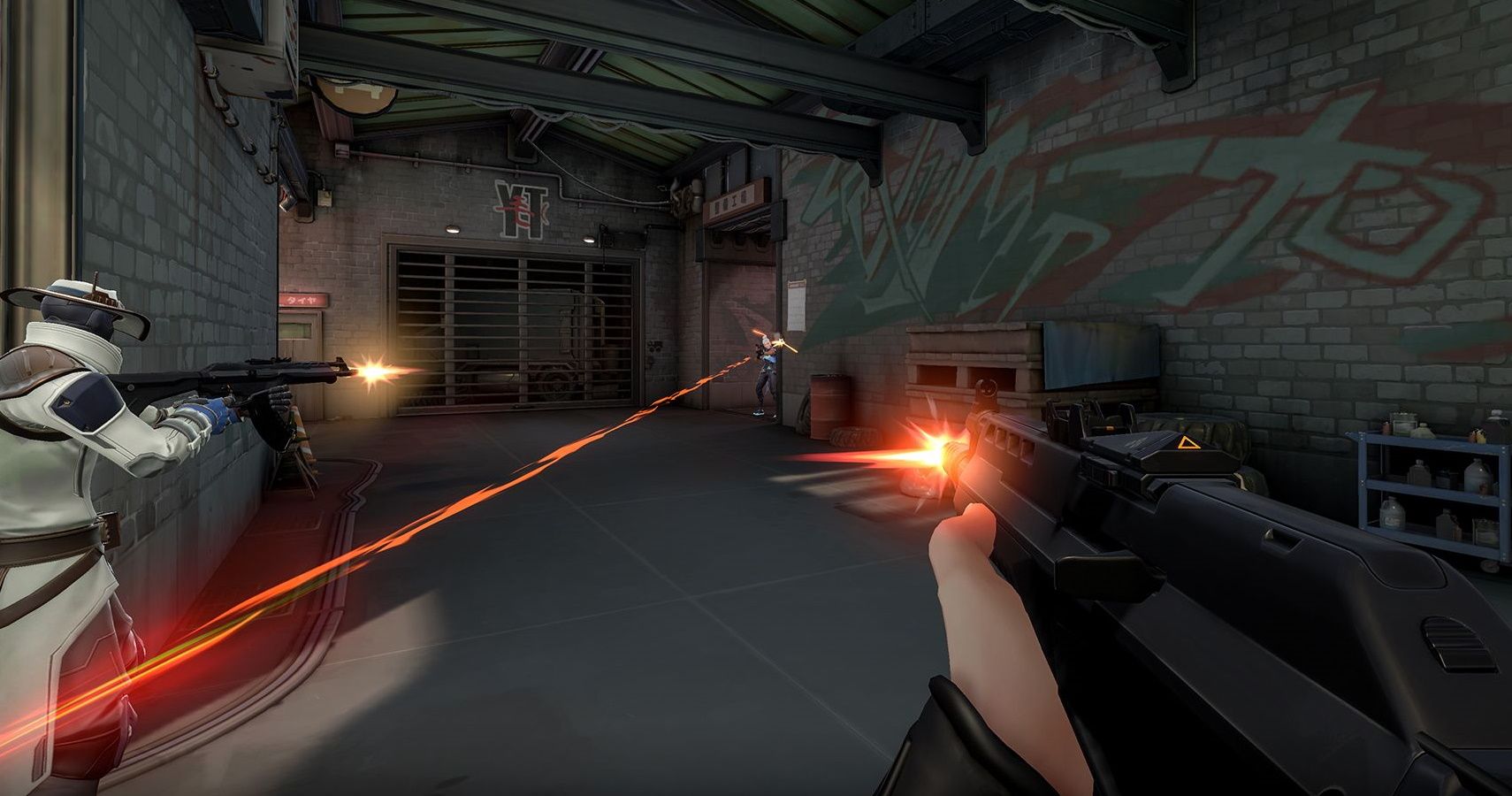Valorant is all about inches. Anxious, lonesome tiptoes into a bomb site can feel like miles. Every nook and cranny potentially houses miscreants eager to ensure you swallow a dose of lead-aspirin. So a razor-sharp focus and steady trigger-finger are essential to success, even when butterflies tickle the pit of your stomach. Otherwise, you're dead. Dirt wedged firmly between teeth until the lesson sticks: this game gleefully bounces people's heads off the canvas.
Tactical shooters revel in the beatdown of bright-eyed newbies, and Valorant is no exception. The time-to-kill is near-instant. Respawns only come with fresh rounds, meaning the wait time adds up if you're pushing up daisies before anyone else. In-game cash for weapons mostly comes from kills and round wins. Play like trash and the entire experience is unbearable, which is an easy feat when you're finding your bearings.
But Riot Games hasn't left new players out in the cold.
I recently had a chance to speak with Max Grossman, senior game designer on Valorant, about helping ease people into the game. From creating Agents like Killjoy who are beginner-friendly to making sure everyone is on equal footing, Riot is committed to making Valorant as fair as it is bone-crushingly difficult.
TheGamer: A friend of mine struggled with Valorant's pace initially. He tried playing Phoenix for a while, but things didn't click. Then he gave Killjoy a shot, and her more defensive nature turned out to be much easier for him to grasp. What kind of player were you trying to appeal to with Killjoy?
Max Grossman: There were a couple of different player types we wanted to appeal to with Killjoy. Most of our characters end up in that same place where there's a couple of competing character motivations and playstyles that we want to go after. Usually, there are two primary components: one is the fantasy of the character. With Killjoy, it's about building turrets, placing traps, and using her whole arsenal. The perfect Killjoy play is like, "oh, [the enemy team] push into the bomb site. They set off her turret, then a trap goes off, I (Killjoy player) swing and shoot in response." Killjoy is for players that feel they out-think and out-plan their opponents.
The other thing we like to consider when creating Agents is how accessible they are. Some characters are a little bit easier, at least in terms of how obvious their abilities are to use. I think Killjoy tends to lean slightly closer to a beginner-friendly Agent once you set up her stuff. You can rely on a lot of her abilities and quickly understand, "hey, people might come through this chokepoint, I should probably put down my stuff that damages people watching the choke point." When you first start playing Valorant, it's a pretty easy toolkit to understand. At least opposed to one of the more complex characters like Viper or Reyna. They require a ton of knowledge to utilize effectively. It sounds like with your friend, or anyone who's getting started with tactical shooters, Killjoy was a character they could quickly pick up and be successful with.
TheGamer: The German efficiency tinge to Killjoy's toolkit and how well her personality and proficiency as an engineer reflects brilliantly in gameplay. When you were designing her, was there skeleton that had a particular utility, and Killjoy's character came later, or was it vice versa?
Max Grossman: It was very much a gameplay-first situation, and the fantasy of Killjoy being this young, hotshot German engineer came after the fact. Many of our characters went that same way. We tend to start with gameplay mechanics first, especially since the game was in development for a very long time. Killjoy is one of the oldest characters in the whole roster, and she went through quite a few different iterations before we got to the final one. We test a toolkit first and experiment with varying ideas of gameplay. Or at least what we think is going to work. Then, during that initial prototyping, we try to figure out what "theme" appeals to that gameplay fantasy.
TheGamer: Does this apply to your design process for all of the Agents?
Max Grossman: For the initial characters that we've launched, most started with just their toolkits and different abilities. However, there was at least a "theme" in mind. Phoenix is a good example. He was always going to be fiery in some capacity—he throws a molotov and is reborn from the ashes, that kind of thing. Viper was the same. She started as this toxic, gas wielding character. But discovering that she was a scientist came later in the development process. Killjoy is a fascinating example since she started as a literal robot. So that component was very different at one point in time, but even then, she still had two of her four abilities that shipped with the final version of the character. Some of the characters change a lot, others not so much.
It does vary from character to character, though. Some start as just pure mechanical "what does the character need to do in the space of the tactical game?" While others began as "the fantasy of this character is so cool, we have to have it." Both places can serve as inspiration as we're making new characters, but I think that, at least for me as a designer, I tend to lean on the more mechanical stuff.
TheGamer: Was there a particular inspiration for Killjoy, be it aesthetics or playstyle? She's compared to the Engineer from Team Fortress 2 in terms of how she plays, and that her visual design was similar to Dokkaebi from Rainbow Six: Siege. If there was no direct inspiration, does the team try to steer away from making Agents that might be too similar to characters from other games?
Max Grossman: When we think about the characters we're making, we tend to first look at player fantasies. So the idea of playing with a turret is something that many players want. We can look at many different games to learn and dissect how similar types of player fantasies exist in other games. I don't think we want to be derivative necessarily, but I also think it would be ridiculous for us to claim that we came up with the turret first as if it's this genius idea since that's not the case. It's more like "there's a turret in Overwatch. How does it work? There's a turret in Team Fortress. How does it work? Rainbow Six has turret-like gadgets." We can compare how abilities work within the context of those games and use it to inform our design. It was hard to figure out how a turret would function in Valorant.
Looking at something like Team Fortress 2, that game's turret is like a bunker. If you put it down and have enough supplies, the opposing team can't get past it unless you have like, 18 people throwing their bodies at it, and the turret is killing people left and right. It's a very different experience than the turret we shipped in Valorant. What we always found most exciting about the turret is this feeling of setting up a crossfire of your own. Sorta like, "OK, somebody is going to attack this chokepoint, my turret [is] on the right-hand side, and I'll hold the left-hand side." So when they try to push through, the turret shoots first, and I can shoot them while they're distracted. Distraction was the concept. Not a turret that instantly and autonomously takes enemies down to zero health.
The turret went through many iterations. One didn't even do damage at all; instead, it created debuff fields. But what shipped had the healthiest gameplay patterns combined with a good cohesion with the rest of her kit.
TheGamer: Some thought Killjoy's bright yellow jacket might make her stand out on the map more so than other Agents, painting a big target on her. How important is color palette in terms of combat readability when you're designing Agents?
Max Grossman: Very important. It's something that I know tangentially, as we have guys on our art teams that are hyper dedicated to this stuff, but I can give you my layman's take on it. The most important thing is that every Agent stands out in the environments in some capacity. No camouflaged-looking dudes running through the environment cause if somebody is shooting at you, we don't want players ever to go, "Huh, where could they be in the environment?" Valorant isn't a hidden-object game. It's about you knowing someone's there and you can have a fight with them. The bright yellow jacket is pushing the extremes of what we are trying to do in that super high visibility. But it's a super important consideration for us.
The design team is involved in the early stages to establish rules for creating characters and making them stand out in environments. We worked with the character artists on what color values to use on the maps relative to how you do that with Agents. Small tiny details end up making a world of difference. Specific RGB color values on our characters are just not allowed to exist on our maps to prevent that "hiddenness" from happening so that the characters always pop out in the world.
TheGamer: Sentinels tend to be a favorite among players new to tactical shooters. Namely, Killjoy, Sage, and Cypher — Agents with robust defensive toolkits. Are Sentinels intentionally designed to be friendly to new players? If not, why do you think a new player might gravitate towards Agents under this role?
Max Grossman: There are two components to this. One being Sentinels aren't solely for newer players. However, two of our three Sentinels do appeal to new players, those being Sage and Killjoy. Cypher, not so much. He's a more cerebral, information-gathering character. Tough to use effectively. But I think there's a reasonable observation around the fact that Sentinels tend to appeal to people that don't feel as confident in their tactical-shooter skills. Because at the very least, they know they can set up their stuff (ice walls, traps), get a gun, and stay there.
New players tend to fall into two general behaviors: hyper-aggressive people who want to run at everything and fight everybody, [and] then more cautious players that are like, "I could die at any second. I'm not gonna take a step forward cause there's someone around that corner, and they're gonna shoot me." The latter camp tend to gravitate towards Sentinel-play patterns. That would be my theory on it, but I could see us making Sentinels that feel significantly more complicated than Cypher that newer players would never want to touch.
TheGamer: When designing Agents, one goal is to create characters who will make for exciting team comps. However, I was curious if you ever develop Agents specifically to be "appealing" or "easier" for new players? I got the impression that Killjoy might be an Agent meant for newbies.
Max Grossman: Definitely. When creating Agents meant to appeal to new players, they need abilities with a lot of direct feedback. Sentinels and reconnaissance characters are great for that. When you hit someone with a Cypher trap or see someone in his camera or shoot a Sova arrow, it reveals everybody — those are all examples of direct feedback. Raze too, you throw a grenade, and people take damage. It's about that feeling of "oh, I'm succeeding at using my toolkit."
Conversely, there's some mental math involved with the more challenging characters to understand if you've succeeded. If you're playing Breach, and you shoot a flash through a wall, and you swing around the corner, and nobody is there, you're like, "well, did it work? I don't know!" Then as you play the game more, you realize; actually, that's a huge success; there's nobody there. "I got this ground, they're not here now" — there's a bunch of those mental gymnastics you need to go through to understand how successful you're being.
TheGamer: A problem that hero shooters struggle with is balancing abilities. Often, meta and competitive play come strictly down to how practical special skills are. Upon reveal, many people thought Killjoy's ultimate looked unfair, but the truth is all you have to do is shoot her and her bot. Do you believe that Valorant's emphasis on skill-based gunplay ultimately frees you from the "ability balancing" problems that similar games face?
Max Grossman: I think "frees us" is too strongly stated. But it gives us a healthy release valve because everybody at the very least has the same guns. With everyone having that shared primary mechanic of "hey, you all have guns, you all move the same," there are many shared behaviors. It gives us a lot of leeway with how our abilities can work. We never want that to be the case in Valorant. We believe in much more soft-counters when it comes to balancing different Agents.
Cypher and Raze is the most salient example for me because Cypher sets up all these tripwires throughout this area, but Raze can throw out some grenades and satchels to blow them up. That's a soft-counter because you could walk through, shoot the traps, or shoot Cypher himself. There are several ways you could've dealt with it. However, Raze is slightly better at dealing with the scenario than a comparable character. You never feel up the river without a paddle.
TheGamer: Conversely, though, does that adherence to skill-based gunplay ever hinder your creative ability when creating Agents since you must work within a tactical framework?
Max Grossman: It's a constraint for sure. Not a hindrance per-say, but it's something that we're always conscious of. Looking at League Of Legends, every hero has their primary ways of interacting with the world, like creating the "Q" ability or the "W" ability — these are the way you're attacking or dealing damage. You can have a wide array of ways to interact in that game. In Valorant, the primary way you interact is by shooting, which has a massive overlap between characters.
Regarding how you're spending time, in League Of Legends, 80% of the time you're using different abilities that are all unique to your hero. In Valorant, 80% of your time is with your gun out, which is not unique to your character. So there's a much smaller portion of time that you're using the distinct Agent abilities. From that perspective, I think it gives us constraints, but not too much.
TheGamer: How hard is it to gather meaningful feedback? In Reyna and Killjoy's case, so many people shout that [this or that] in their toolkits were overpowered. Is it tough navigating the sea of comments like this to gather meaningful feedback?
Max Grossman: After they go live, it's always tough. We have a bunch of internal data on how Agents perform and can look at the numbers and use that as our most important balancing act. If a character is winning 57% of their matches (none of the Agents are winning that much; this is just a hypothetical) — that's probably something we should address, whether or not the community is aware of that problem. Then there's the flipside: players think something is overpowered, but we have hard data that shows it's not. Regardless of how we get that information, we can identify those problems as things that need addressing, and the solutions can look very different.
All feedback is meaningful, though. We rarely look at someone's critique and go, "that's not useful at all" — all opinions and feelings people have about Valorant are important. Whether or not we act upon those concerns is a complicated process, though. When Raze came out, for example, we tested her for so long with this power budgets and thought, "she's strong, but nothing crazy" — then the community got a hold of her and it turned out we were wrong.
TheGamer: Killjoy's been out for a while now. Did you learn anything from her release that'll carry over into future Agents?
Max Grossman: Mostly, our skin has gotten thicker. That would be my biggest takeaway. Like with Killjoy's turret, there was a lot of skepticism online, and internally that's something that you see and go, "oh god, are we doing the right thing?" For me, it helped build some of that armor and confidence that we weren't ruining the game, which feels good. Chances are if the community is skeptical about an Agent, we are too while designing them. While making a turret character for Valorant, we thought, "well, can we? Can it be good?" A turret that sits there and kills people betrays the promise of our game. So when we see a bunch of people online that feel that same way, I empathize. However, once someone gives a new Agent a spin, I always hope they realize how much work we put in before releasing anything in Valorant.




